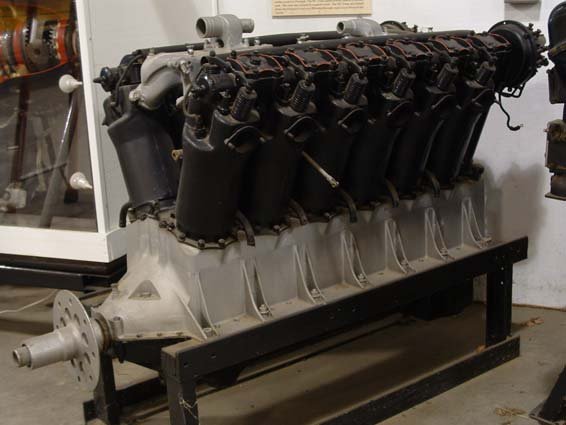1917 Packard Liberty L-12

Description
When the United States entered World War I in 1917 there was an urgent need for aircraft engines. Government officials wanted a new engine design that would be flexible for different types of aircraft. Ideally, the new engine could be produced with four, six, eight, or twelve cylinder variations.
Engineers met in Washington, DC in May 1917 to create a design for eight and twelve cylinder engines. The lead designers included E. J. Hall of Hall-Scott Motor Car…
When the United States entered World War I in 1917 there was an urgent need for aircraft engines. Government officials wanted a new engine design that would be flexible for different types of aircraft. Ideally, the new engine could be produced with four, six, eight, or twelve cylinder variations.
Engineers met in Washington, DC in May 1917 to create a design for eight and twelve cylinder engines. The lead designers included E. J. Hall of Hall-Scott Motor Car Company and Jesse Vincent of Packard Motors. Within six weeks, the design was certified for production and the first eight-cylinder versions were produced by the end of August.
Once the design was completed and approved, the government contracted with Ford, Lincoln, Packard, and Cadillac to build over 20,000 engines in 1918 and 1919. In addition to assembling engines, Ford produced all the cylinders for the engines. Ford engineers improved the cylinder manufacturing process when they created a method to make them out of steel tubing instead of boring them out of solid steel blocks. This cut manufacturing costs from $24 per cylinder to $8.25. By the end of the war, Ford produced 415,377 cylinders; enough for almost 35,000 engines.
After the war, both the aviation and auto industry was changed by the Liberty engine program. The government sold most of the 20,000 engines that were made. In the 1920s, Liberty engines powered many different aircraft including airmail planes, new military aircraft, and private planes. They were also repurposed for other uses including powering rumrunner boats during Prohibition.
The Liberty engine program also inspired the founding of the Lincoln Motor Company. When the government sought companies to build the engine, General Motors president William Durant refused to allow his divisions to bid on the contract because he was a pacifist. Cadillac division head Henry Leland quit GM and founded Lincoln in order to build Liberty engines. After the war, Leland continued the company as a luxury car brand competing with his former com
